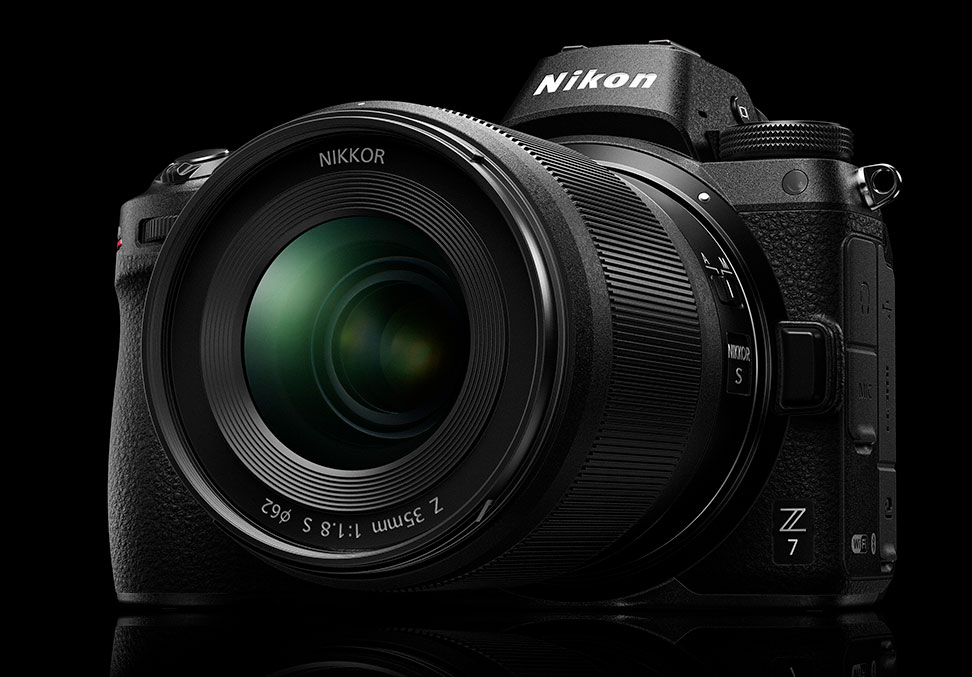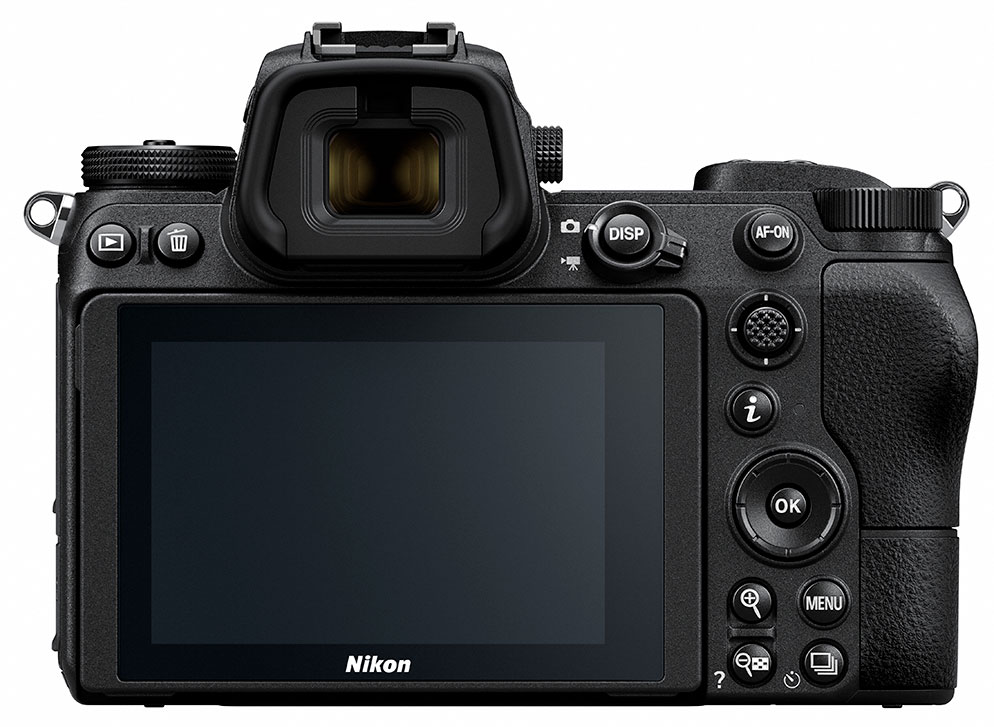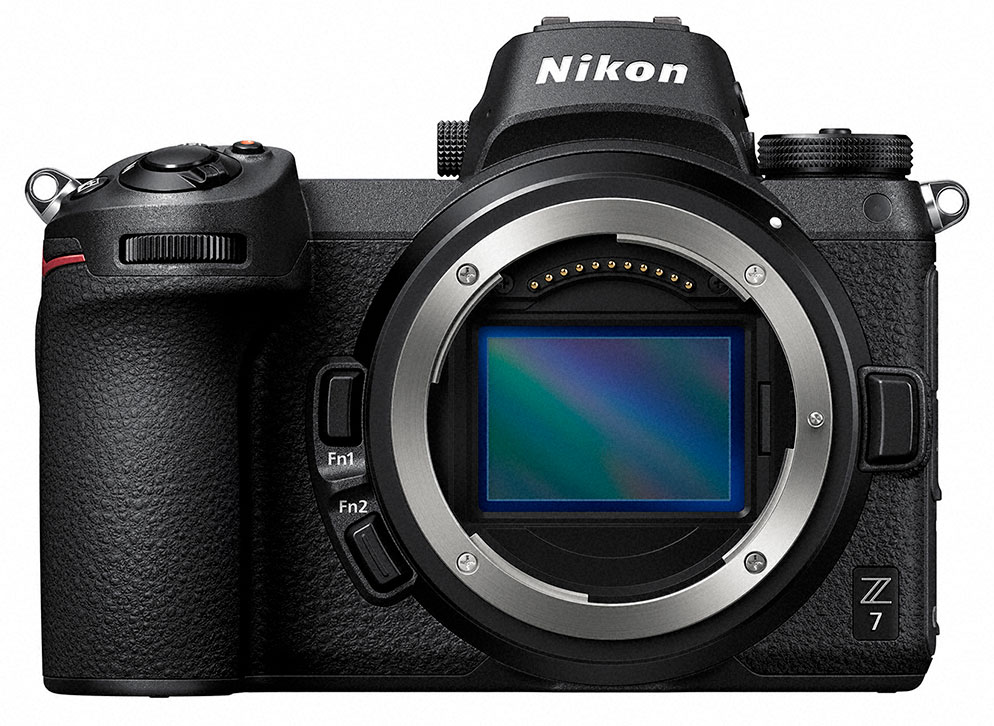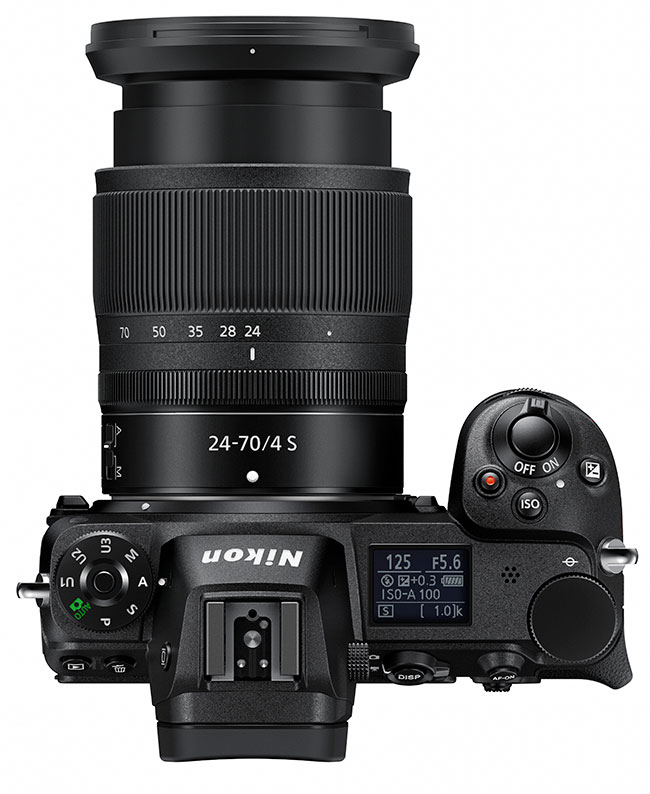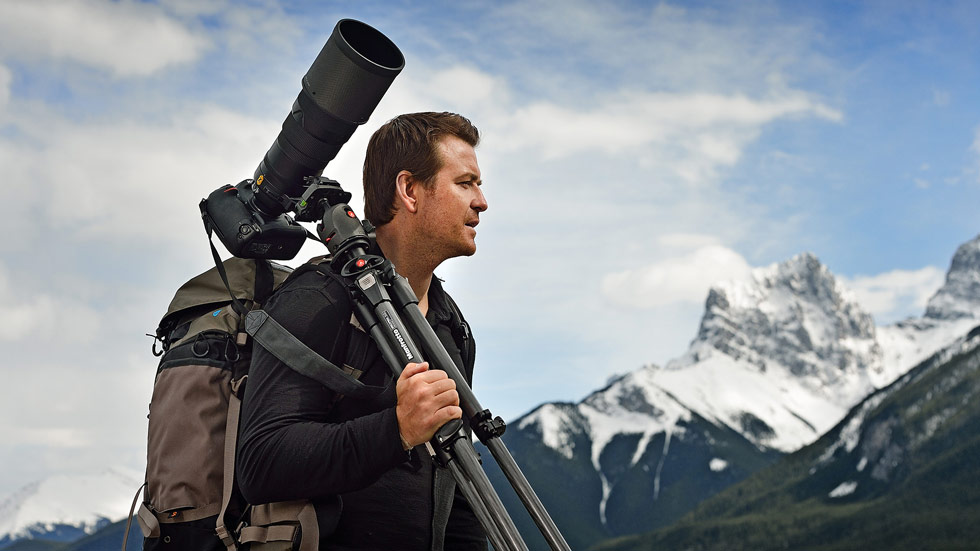How to Customize Your Z Series Camera
Tailoring the camera to your shooting needs and style
One of the great things about the Z series full-frame mirrorless cameras, (Z 7 and Z 6) is the ability for you to customize the layout of options and settings in such a way that you can spend less time scrolling through menus to reach settings and more time thinking about what you’re capturing or actually shooting. This allows you to truly make the camera yours.
If you shoot both stills and video, you can customize the camera differently for each. Or customize your camera based on the type of photography you do—event/portrait or landscape or sports.
Not only can you customize what the Function Buttons do (Fn1/Fn2), but you can also customize the i button and which settings it houses—including different options for still vs. video vs. playback. The i button’s options show up on the rear LCD when you press the i button, and they also show up in the EVF (electronic viewfinder) as well. You can access them and switch between them in either location.
There are also other buttons that you can change what they do from the default. These include the AF-ON button, the center of the sub-selector and the sub-selector itself, F-mount NIKKOR Fn button (on those lenses that feature one), Z NIKKOR control rings and the movie record button while in still photography mode.
Significantly setting up the camera to how you want to work will make your life easier—just pick up the camera—access the controls you need—and go to work. Less navigating through menus and sub-menus to reach the features you use on a regular basis.
There are literally dozens of ways to set up your camera so its unique to how you want to be able to shoot—including the popular My Menu setting. Like changing up the format from square to 16:9 or DX; or do you often shoot HDR; or maybe you want to be able to change the camera’s white balance while in the middle of shooting; or do you want easy access to switch between the 20 different Picture Controls; or maybe you need to adjust the flash mode/compensation settings often? You can set up your camera to quickly access each of these types of settings and so many more! We couldn’t list every option in this article—so check out your camera’s user’s manual to see exactly what customization options the Z series cameras can offer you.
Customizing the i Button
Customizing the i button is a great way to access the settings you use regularly. And, because you can change out what you see when you press the i button, you can replace those features you rarely need with ones you’re more likely to utilize on a regular basis. No more wasting time scrolling through menus when those features you want are right at your fingertips.
Modify the i Button
Go to Custom Settings > Controls > f1 Customize i Menu. Once you’re done swapping out the options you want to appear in the i Menu, just click the Menu button (Done) to save the changes.
Modify the Function Buttons and other buttons
To modify what the Function buttons do for still photography, go into Custom Settings > Controls > f2 Custom Control Assignment. Then simply select Fn1 or Fn2 and choose which role you want played by that button, and save your changes.
To modify what the Function buttons do when in movie mode, use Custom Settings > g2 Custom Control Assignment which you’ll find under Custom Settings > Controls > Movie.
Under Custom Settings, go to f2 to change what the camera does when using the following buttons: Fn1, Fn2, sub-selector, sub-selector center, AF-ON, movie record button, (F-mount NIKKOR) Lens Fn button and lens control ring. When you’re done changing those settings, just press the Menu button (Done) to save and exit out of that menu.
Modify the Control Ring on NIKKOR Z Lenses
On the NIKKOR Z lenses that feature a control ring, you can also change the default setting of what turning it will do. The default setting is focus. You can set it to control exposure compensation or aperture if you’d like instead.
Modify the OK button
Under Custom Settings, go to f3 to choose what you want the OK button to do when in still shooting mode and for playback. You’ll find g3 lets you change what the OK button does in movie mode.
You can customize what the command dials do via Custom Settings f5.
Customizable buttons visible when looking at the top of hte Z series cameras are the User 1, User 2 and User 3 buttons on the far left mode dial and the video record button (its the red button just to the lower left of the on/off lever). The NIKKOR Z 24-70mm f/4 S lens which is attached to the camera shown has a control ring between the markings for the name of the lens and the zoom range markings.
User settings
There’s one more feature of the Z series cameras that allow to you further personalize your set-up—User 1, 2, 3. These are accessible by the mode dial. A variety of frequently used settings can be saved to the User settings. For instance, maybe the way you set your camera up for landscape shooting differs from how you like it set up for portrait shooting vs. how you shoot sports. You can save each user setting for a specific type of photography or video shooting.
To change User settings, rotate the mode dial to the mode you want, then choose your focus point, adjust your shooting mode, exposure and flash compensation, aperture and settings in the photo shooting, movie shooting and custom settings menus. Then go into the Setup Menu and select Save User Settings, and highlight Save to U1 or Save to U2 or Save to U3. If you find you don’t like what you’ve set up as a User setting, you can select Reset user settings and start over. Just note that some photo shooting items and a couple movie shooting items can’t be saved to the User settings, so check your user’s manual to see which ones you can use.
Read the user’s manual and play around with the various controls that can be modified to fill your needs or shooting style. You may find that depending upon the type of work you’re doing or the season of the year that you’ll want to move settings around.
We asked a few of the Nikon folks and Nikon Ambassadors to tell us how their cameras are set up. Read on…
I've set up my camera with the following items in the i Menu for stills: Picture Control / Focus Mode / AF Area Mode / Silent photography / Peaking Highlights / Auto Bracketing /
White balance / Flash Modes / Choose Image Area / Electronic Front Curtain / VR / HDR.
And I've set up the i Menu for video this way: Picture Control / Frame size and rate / Choose image area / VR / Electronic VR / AF Area mode / White balance / Mic Sensitivity / Peaking / Highlight Display (Zebra) / Wind Noise / Focus Mode
The Control Ring is set for manual focus. Fn1 has the default setting of AF Area Modes and Fn2 is set to the top Item in My Menu (to access Group Flash Options).
Wedding, portrait & fashion photographer and Nikon Ambassador Jerry Ghionis’s Z 7 set up:
I haven't customized the i button as I have everything I need in camera with the ability to access My Menu through the EVF.
I keep the control ring on the native (NIKKOR Z) lenses set for manual focusing.
What has made my shooting process so much more faster and more efficient is the ability to access MY MENU via the Fn1 (Function) button, the ability to assign the preview button to the Fn2 (Function) button and 100% magnification via my AF-ON button. This means that whilst keeping my eye to the camera and holding the weight of the camera in my left hand, with my right hand I can change menu items, press the shutter, preview the shot and check focus by pressing the 100% magnification button within a couple of seconds. It has truly revolutionized the way I shoot.
I have also customized at least one of the User settings. In essence these settings are a shortcut to a recipe of settings you want quick access to. I shoot almost exclusively on the manual setting. That being said there are times where I would love quick access to aperture priority like photographing a recessional at a wedding where you're in a dark environment with tungsten lighting then you must quickly walk outside to capture the couple exiting the church in direct sunlight. By the time you have to change your ISO, aperture, shutter speed and white balance under the pressure, you may miss the shot or screw up the exposure. For situations like these, I have set my User Setting #3 (U3) to help. Why number 3? Because it's closest setting to the manual setting on the dial. The custom settings I use are aperture priority at f/4, Matrix metering, Auto white balance — AUTO2, Auto ISO with a minimum shutter speed at 1/200sec and a maximum ISO of 12,800.
Joseph (JC) Carey, NPS Professional Marketing Representative, has his camera set this way:
Fn1: set to access the top item in My Menu. The top item for me is Group Flash Options so that when I’m using the WR-R10 or even have a flash on the hot-shoe I can quickly and easily change the power and settings for my flashes from my camera. As a flash user this takes a lot of steps out of trying to change power when using the Advanced Wireless Lighting system.
Fn2: opens My Menu which has format, battery info, Airplane mode and a few other items in it which I use regularly.
One of the things I enjoy about the Z 7 is the customizability of the i Menu. I set mine up from right to left in order of importance to me with my AF settings being to the far right. Focus mode on bottom right with AF Area mode just above it. These are the two items I am most likely to change during a shoot so the cursor is there 95% of the time when I hit the i button. Next to those are Picture Controls and WB and then Silent On/Off and Metering. The next column is flash mode and multiple exposure (I’m moving toward things I will use rarely but don’t want to dig into the menus to find) Image Quality and Image Size are next. In the past I would never go away from RAW but with the advent of SnapBridge being a viable tool and larger XQD cards I tend to spend a bit more time on my Picture Controls and making sure that I have a small JPG shooting side by side with the RAW so I can export images to social media quickly. Vibration Reduction and Electronic Front-Curtain shutter are my last row.
The Sub-Selector Center is set to image area so I can quickly move to 4:5, square or 16:9 ratios without taking my eye away from the viewfinder.
The movie record button is set to grid display while in photo mode because I have a hard time holding a straight image.
Michael Corrado, Nikon's Sr. Manager; Pro Relations & Marketing Business Development sets up his camera like so:
The Fn1 button is playback in tandem with the AF-ON button, which is set to zoom into playback or the live image. The Fn2 button is set to call up My Menu.
The one Item that I've replaced in the i menu is Active D-Lighting, which I don't often use, with Silent Shooting which I do use.
I've kept the default setting of manual focus on the lens control ring. It engages focus peaking, which is key when I'm photographing birds that aren't out in the open.
Scott Diussa, NPS Manager, Field Operations has set his Z series cameras to the following User settings:
I've found that the User settings on the mode dial can be very useful for shooting a video project as well as having them used for different still image looks or styles. Between the U1, U2 and U3 settings you actually have six unique combinations for both stills and video. Let’s take a look at a way you can set these three user settings up for different video looks.
Let’s say you want to shoot video at 1080P 30fps in a standard color type of look with either a full or semi manual exposure setting. Put the camera in the M mode and set the menu functions to how you would like. For example:
1. Movie Menu – Frame size/Frame rate – 1920x1080; 30p
2. Set Picture Control to Standard
3. ISO settings – Auto ISO mode to ON (if you aren’t sure what your exposure will be. The camera will keep the shutter speed and aperture settings while varying the ISO to get a correct exposure)
4. Set White Balance
5. Set Focus mode to AF-F
6. AF-area mode to Auto-area AF
7. Vibration Reduction to ON
8. Set Microphone Sensitivity (depending on your subject, either manual or auto)
9. Set your Shutter Speed to 1/60 (twice your frame rate) and Aperture (to whatever you want, maybe f/4 to start)
10. Go to Setup Menu – Save user settings – Save to U1
Now you have all of your important video settings ready to go in U1. For a different look that you can cut to in your project you can try something different. In the list above substitute #1 and #2 and save to U2. For example, return the camera to the M mode. Then change the following:
1. Movie Menu – Frame size/Frame rate – 1920x1080; 60p
2. Set Picture Control to C6 (Dramatic) and make the Effect Level 60/100.
3. Adjust your shutter speed to 1/125
4. Go to Setup Menu – Save user settings – Save to U2
This will give you a really cool dramatic look but only at 60% with the regular color video showing through. Then you can set U3 to one other useful setting. Return the camera to the M mode and change these settings:
1. Movie Menu – Frame size/Frame rate – 1920x1080; 120p
You can also set this to 1920x1080; 30p x4 (slow-motion) if you'd like but the 120p setting records sound and you can use it for slow motion video in the same way. The sound can help sync up parts in editing.
2. Set the Picture Control to C17 or C18 for a black and white look. Make the effect level between 50 and 70 out of 100. This will give it a black and white look with a bit of the color showing through for a nice effect.
3. Adjust your shutter speed to 1/250
4. Go to Setup Menu – Save user settings – Save to U3
Now when you're shooting video you can easily switch between these three different looks simply by rotating the mode dial to U1, U2 and U3 and all of your video settings are completely ready to go. If you make any adjustments to any one of these don’t forget to save them to the correct U setting in the Setup Menu before changing the dial. Then you can tweak each one and make updates as you shoot.
Try different Picture Control “looks” and mix them up in your video projects. Because the Z cameras can shoot HD video at 120fps you can achieve some great slow motion looks or some real crisp video looks with this high frame rate.

